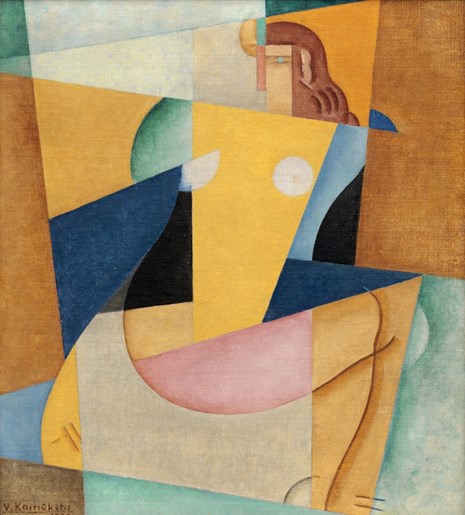The work of Vytautas Kairiūkštis, who is hailed as a pioneer of the Lithuanian avant-garde, combined principles of Constructivism, Suprematism and Cubism. His innovative pieces often shocked his contemporaries who visited art exhibitions, earning him a position as a major modernist in the history of Lithuanian art.
The interwar period was the most interesting period in the painter's career. Typical features of his art emerge in one of the most famous works by him, a rather small-scale canvas calledCubist Composition. Seated Woman.
The female figure is positioned centrally. The woman is probably the most favoured motif in Kairiūkštis' work, and he used it as an instrument for his formal experiments. The body parts depicted are translated into geometric shapes, and the space of the painting is divided into geometric planes. The composition of dynamic diagonals harmoniously combines the strict, direct lines with the freely floating curves of the woman's hair and body. A warm and light colour scheme, and a smoothly laid and thin layer of paint, which are typical of his work, are also evident in this painting.
The title of the painting hints at the fact that the composition is based on the principles of Cubism, and it expresses the artist's predilection for this avant-garde trend. But the subtlety, the light lyricism, and the tendency towards decorativeness hint at the influence of Art Deco, which greatly modified his artistic language.



